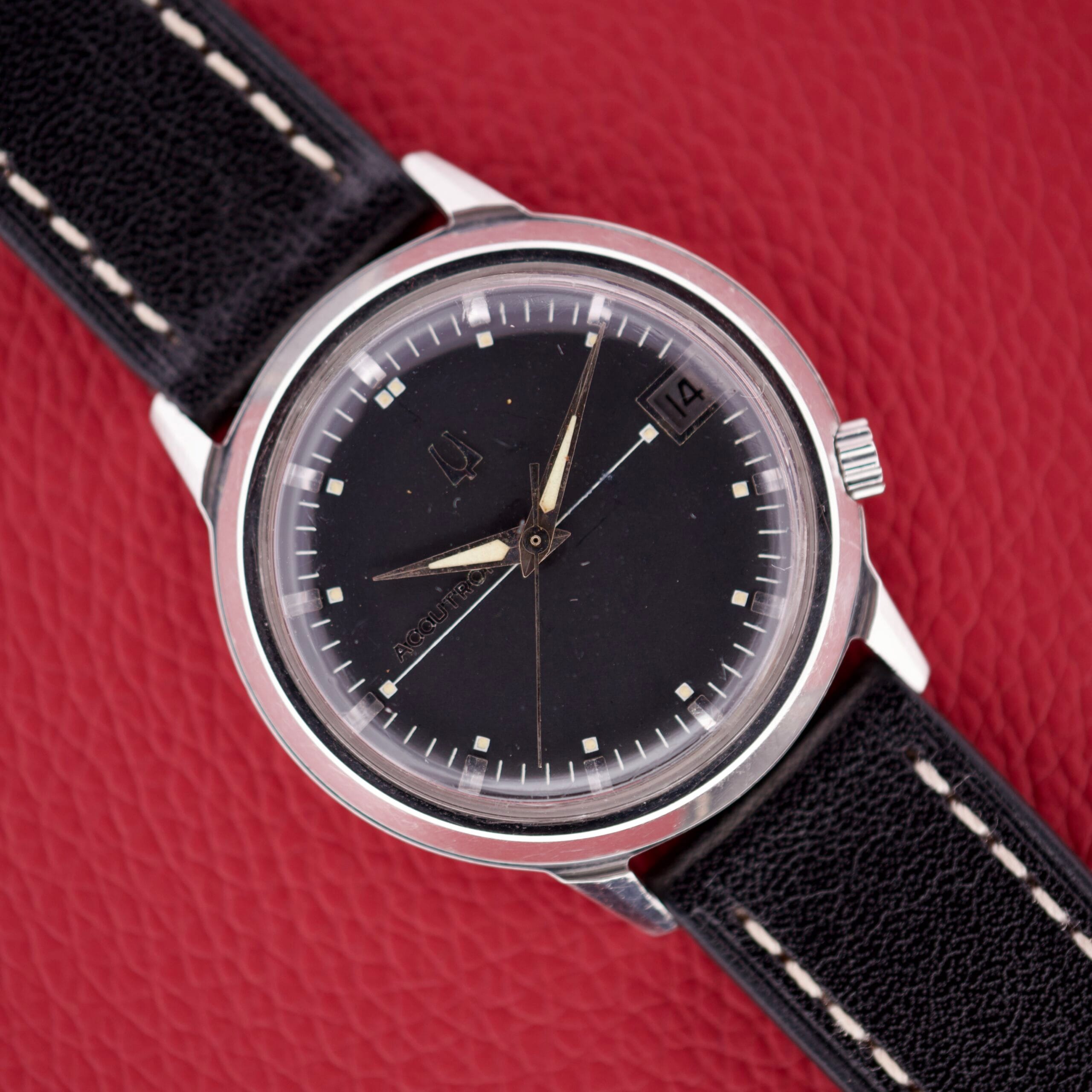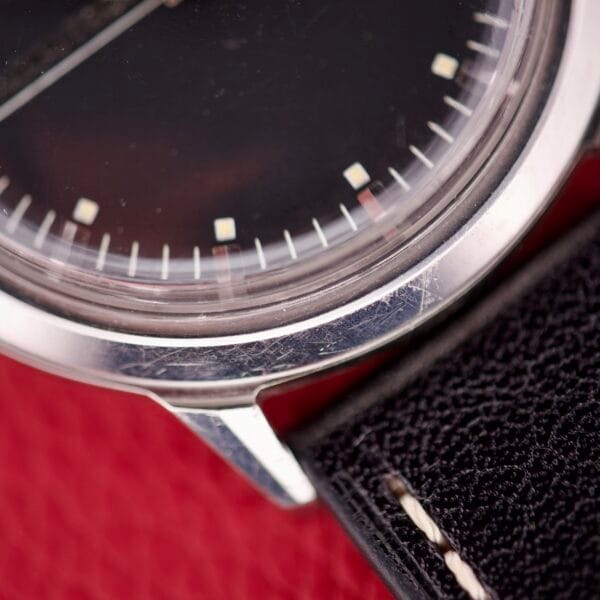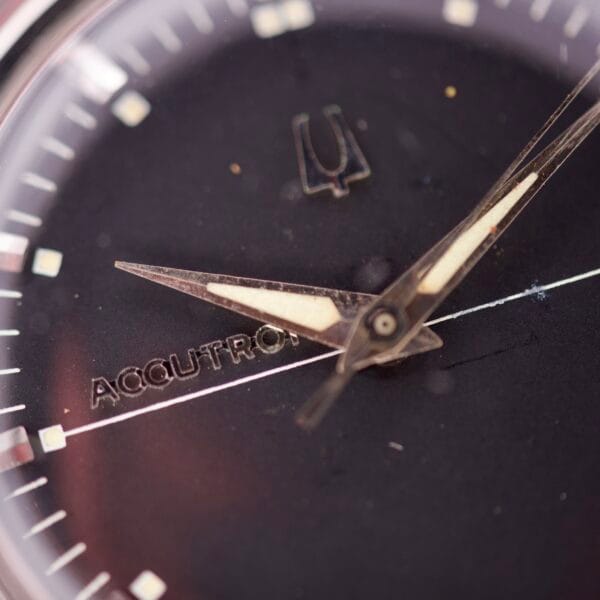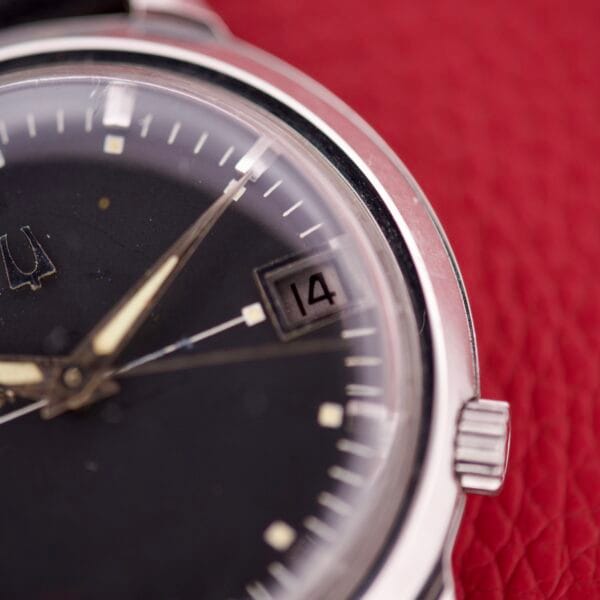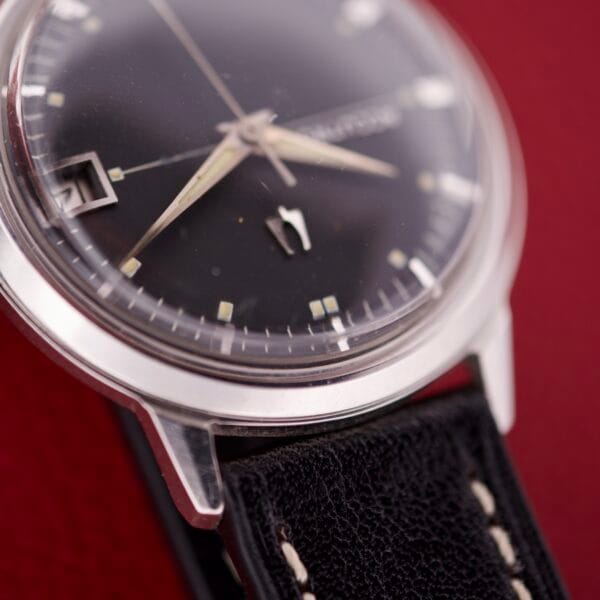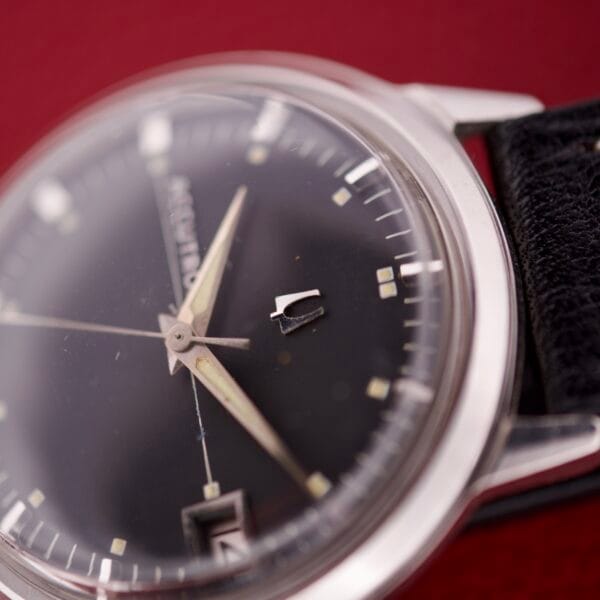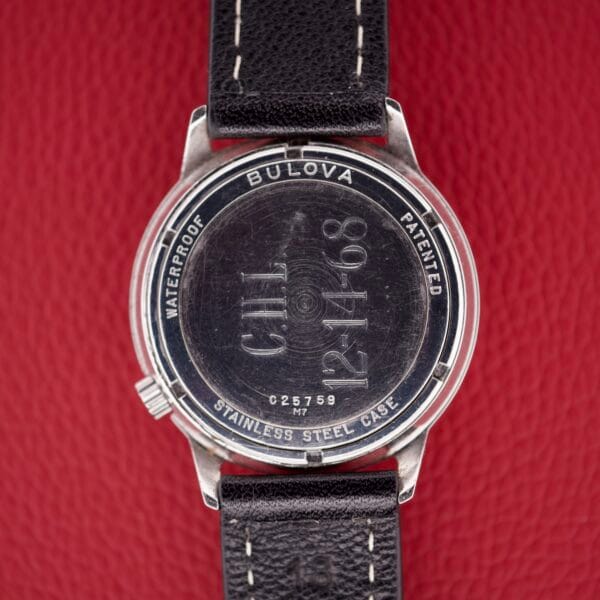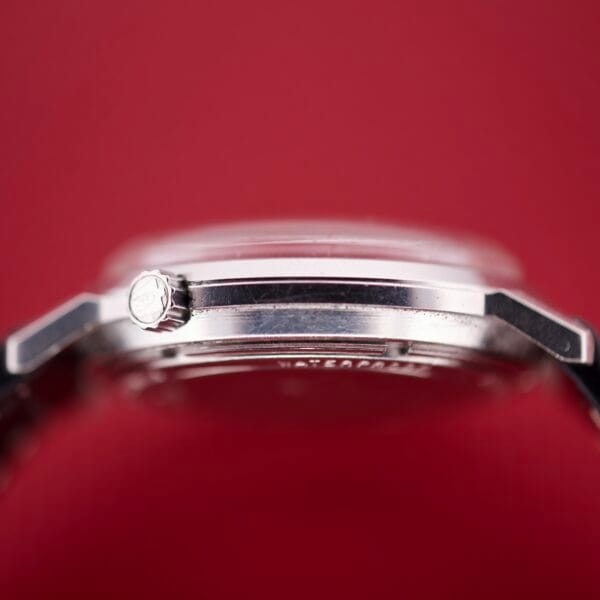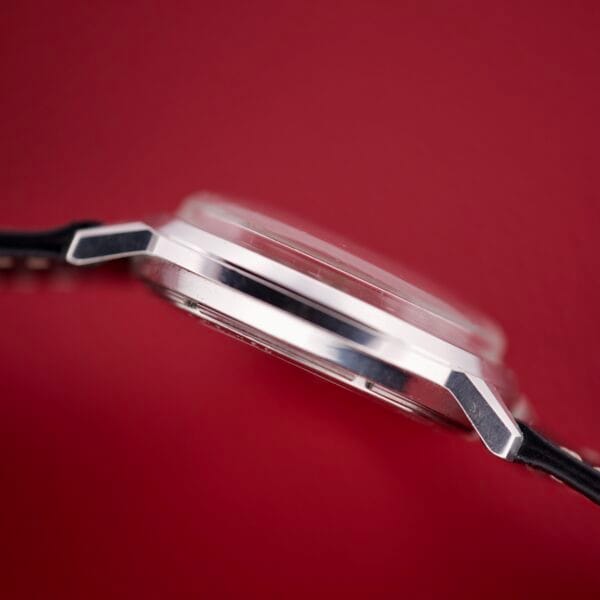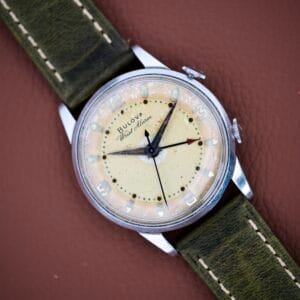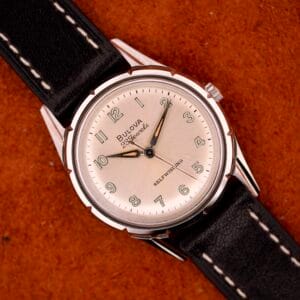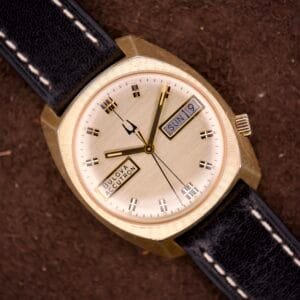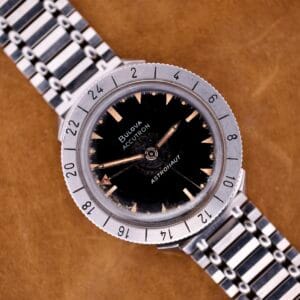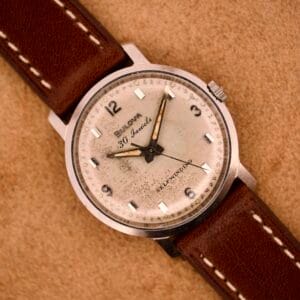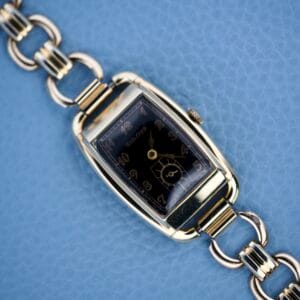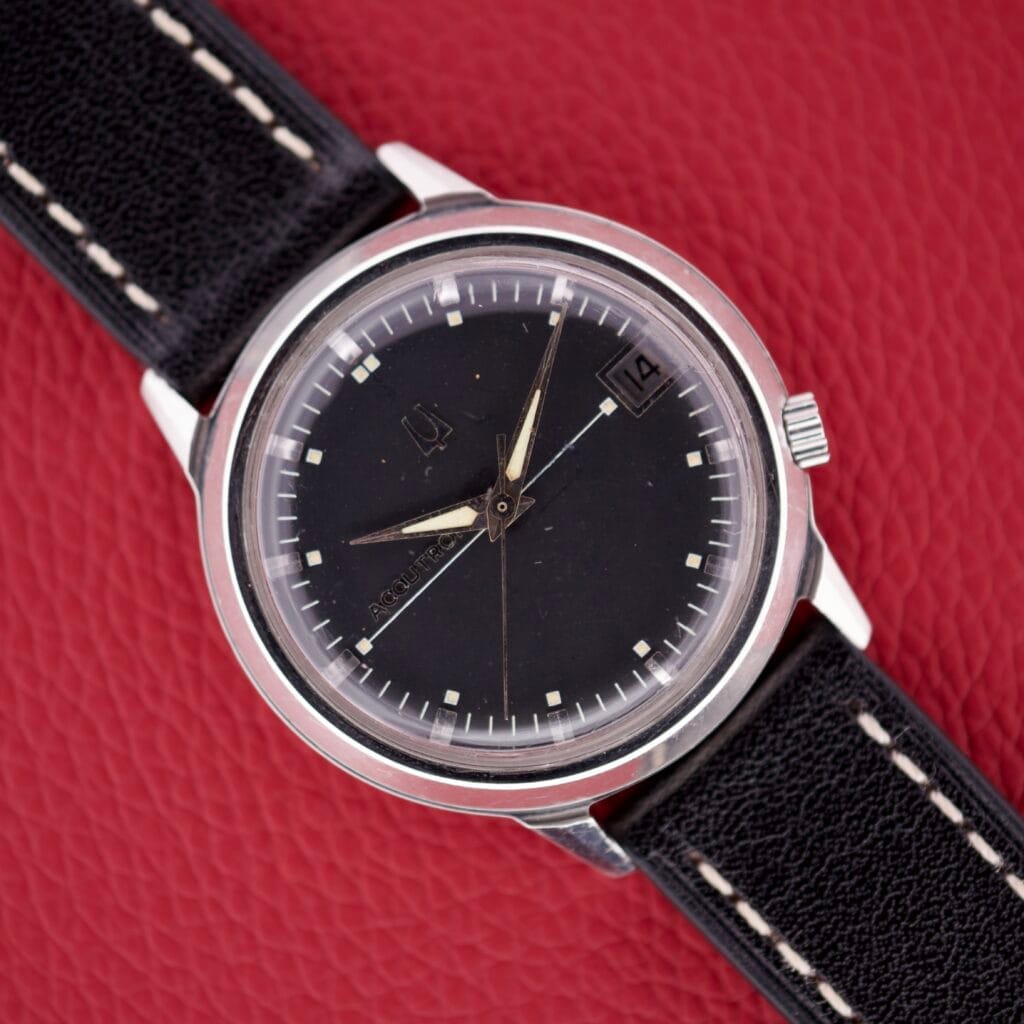Don't miss the next drop
In the history of timekeeping, there are very few moments of true, paradigm-shifting revolution. The Bulova Accutron is, without any doubt, one of them. Before the quartz crisis changed everything, the Accutron and its incredible tuning fork technology represented the future of horology. It was a watch that hummed rather than ticked, a marvel of electromechanical engineering that was the most accurate timekeeper in the world upon its release. This Accutron, with its stark and handsome black dial, is a fantastic example of this groundbreaking technology, a direct link to the space-age optimism of the 1960s and a wildly cool piece of horological history.
First introduced in 1960, the Accutron was the brainchild of Swiss engineer Max Hetzel. Instead of a traditional balance wheel, the Accutron utilized a tiny tuning fork that vibrated at an astonishing 360 Hz, powered by a transistorized electronic circuit. This innovation produced a level of accuracy that was simply unheard of for a wristwatch, and it generated a signature, audible hum that is instantly recognizable to enthusiasts. The perfectly smooth, sweeping seconds hand—a visual byproduct of the high-frequency vibration—was another Accutron hallmark, a clear sign that this was no ordinary watch. The Caliber 218, introduced a few years after the original 214, added the convenience of a date function and a traditional crown for setting the time, making it a more practical and user-friendly evolution of the technology.
This particular example is a stunning specimen of mid-century design and history. The case back is clearly marked “M7,” dating its production to 1967, a prime year for the Accutron. Its stainless steel case is classic and versatile, with clean lines and sharp, unadorned lugs. The dial is the real star—a deep, glossy black that provides a perfect backdrop for the polished steel, lume-filled baton markers and dauphine handset. The applied Accutron tuning fork logo at 6 o’clock and the framed date window at 3 o’clock create a perfectly balanced and utilitarian layout. The case back also bears a fascinating “C.I.I. 12-14-68” engraving, likely indicating it was presented as an award or a service watch, adding a unique and personal layer to its history.

